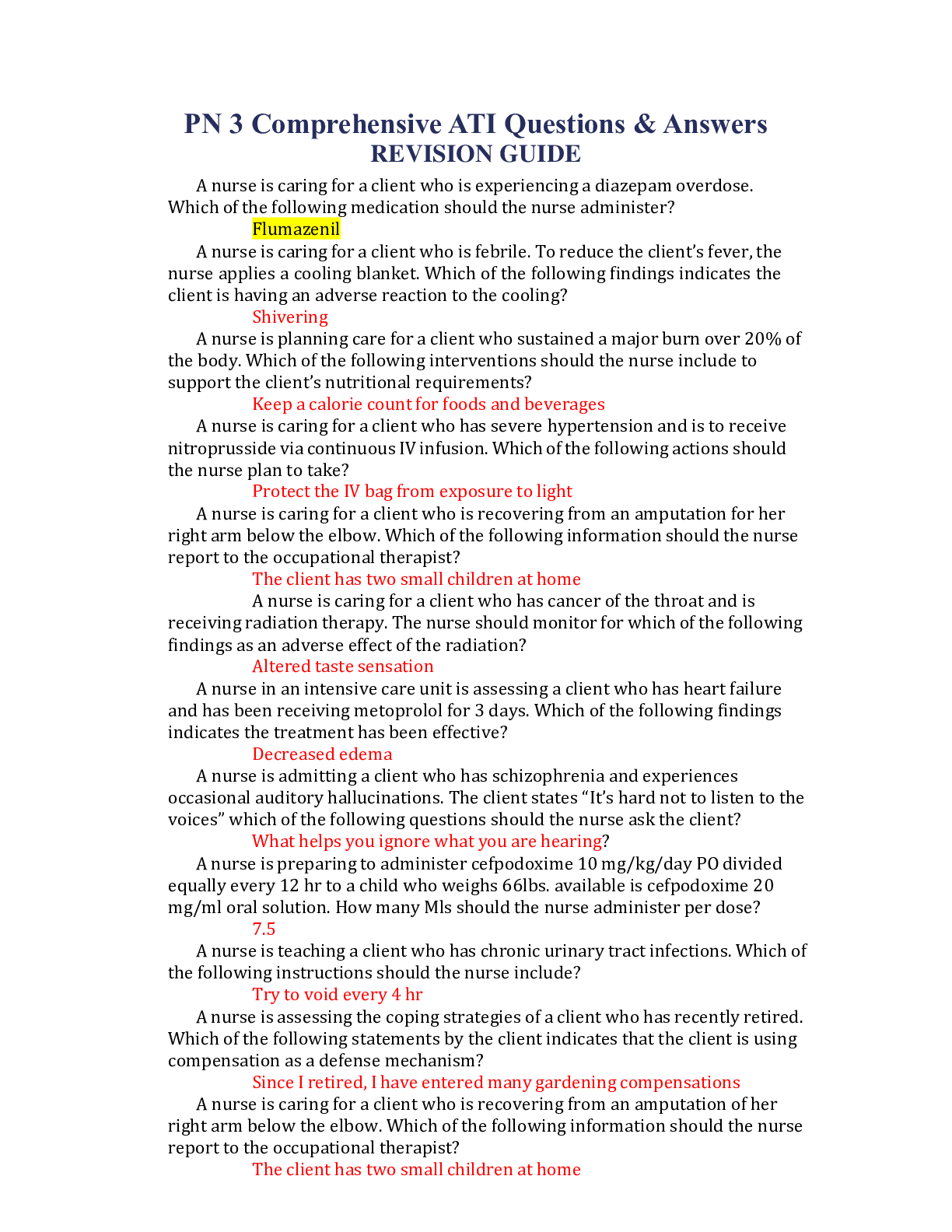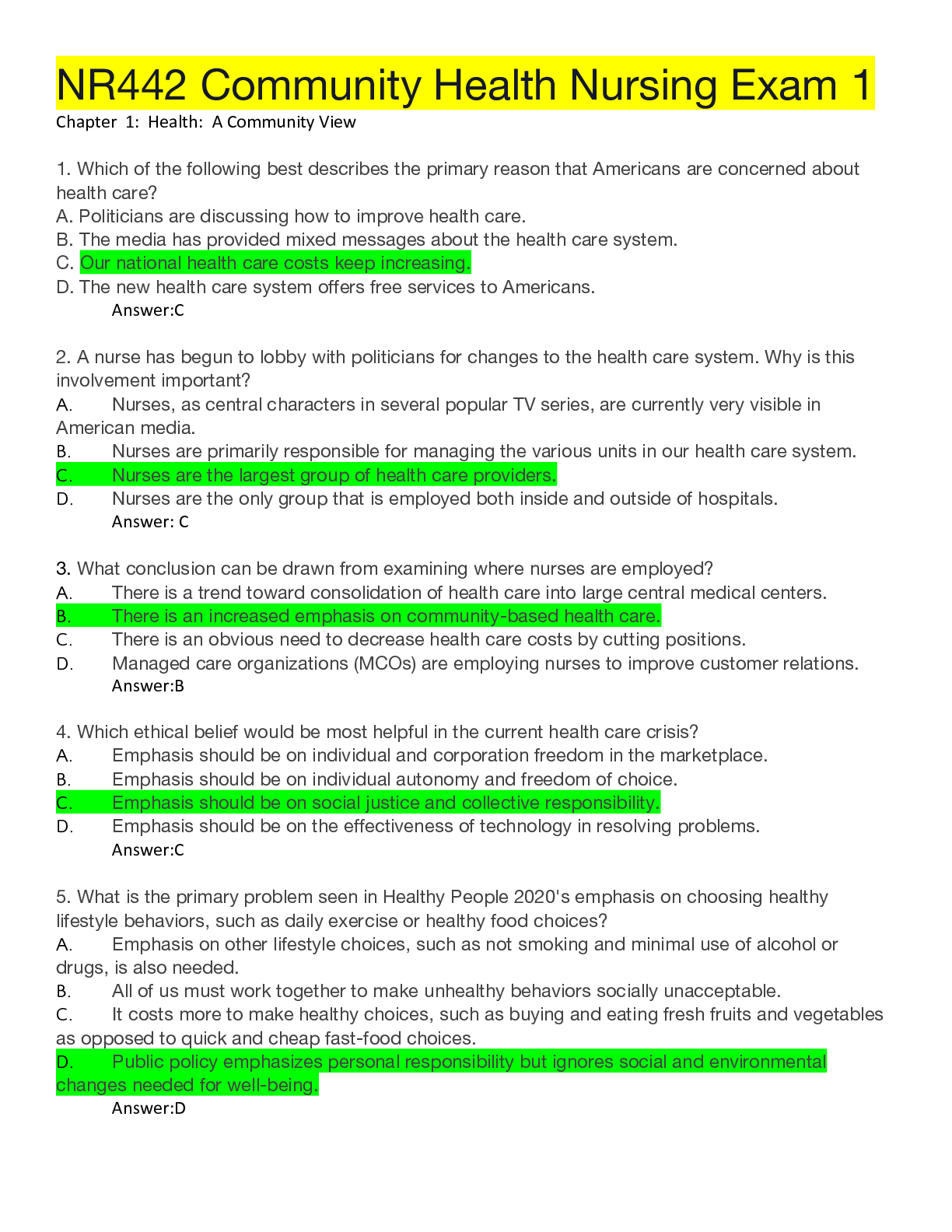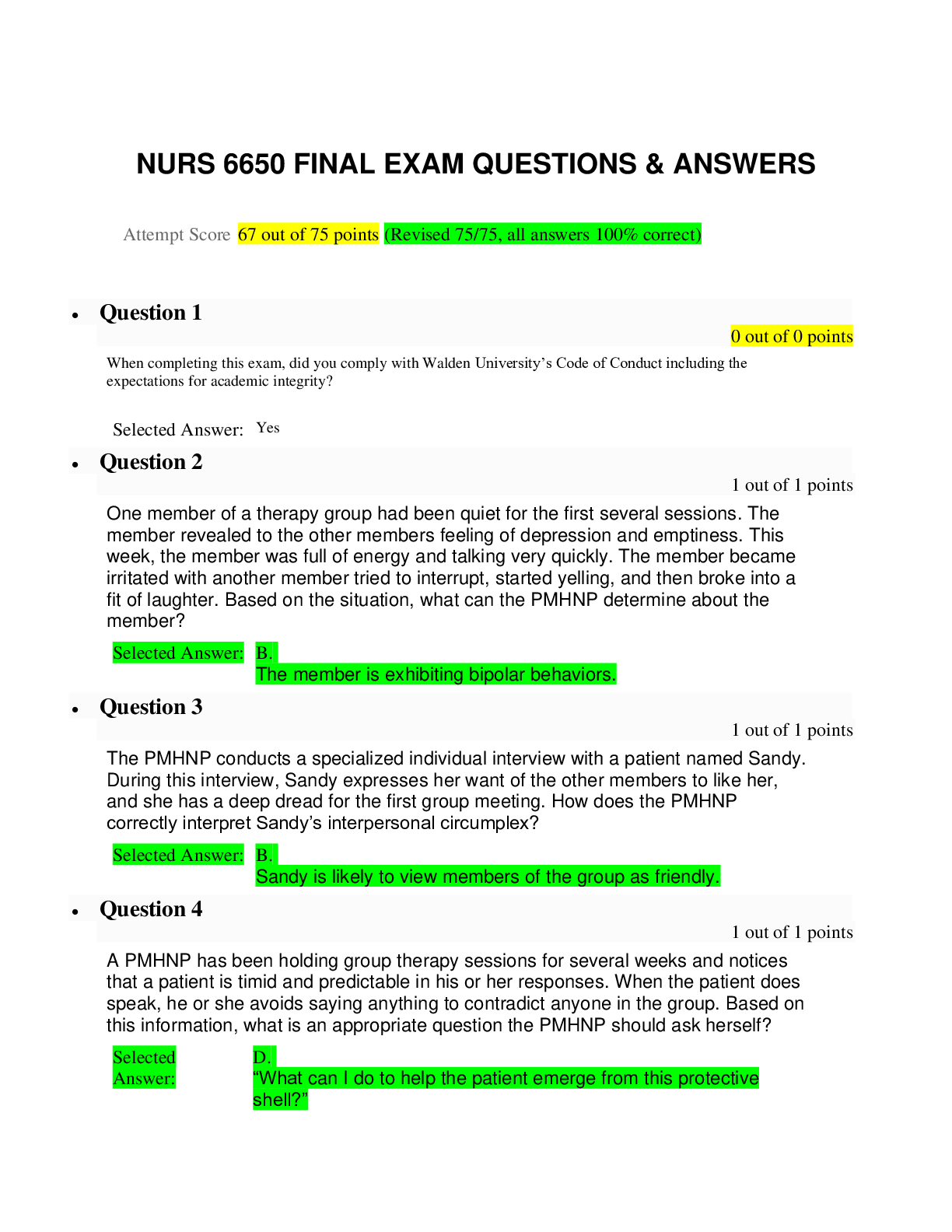Health Care > EXAM > ATI TEAS 6 PREP-SCIENCE/Latest 2022:2023/ Questions & Answers (All)
ATI TEAS 6 PREP-SCIENCE/Latest 2022:2023/ Questions & Answers
Document Content and Description Below
Which of the following is a vitamin that a person's body synthesizes? A. Vitamin E B. Vitamin C C. Vitamin A D. Vitamin D (ANS- D. Vitamin D Vitamin D is the only vitamin the human body synth... esizes, and the process of synthesis takes place within the person's skin. At the time this vitamin is inactive, and what makes the process successful is the presence of sunlight. Trypsinogen is one enzyme that the pancreas secretes, and is then converted to trypsin by another enzyme, ___________, within a peron's duodenum. A. Hydrochloric acid B. Pepsin C. Protease D. Enterokinase (ANS- D. Enterokinase This enyzme, also known as "enteropeptidase," is responsible for converting this trypsinogen that is not yet active to its active form, which is trypsin. Enterokinase is produced by the duodenum's lining. Hydrochloric acid, pepsin, and protease are all incorrect answers. _________ is/ are responsible for the production of the follicle-stimulating hormone, which enables ovary follicles to mature. A. The ovaries B. The corpus luteum C. The pituitary gland's posterior lobe D. The pituitary gland's anterior lobe (ANS- D. The pituitary gland's anterior lobe The pituitary gland's anterior lobe, situated right at the bottom part of the brain, supplies the FSH, which then enters the bloodstream and penetrates the ovaries, causing follicles to mature. When a chemical reaction is taking place, as illustrated here, what does X represent? Sulfuric acid + X = salt + water + carbon dioxide A. Potassium B. Copper (II) oxide C. Sodium carbonate D. Magnesium hydroxide (ANS- C. Sodium carbonate Acids are known to react when mixed with carbonates and they end up producing salt and water as well as carbon dioxide. Considering there is a production of carbon dioxide during the reaction, it means that the substance 'X' represents can only be a carbonate. The other choices have no carbonate. There is a ball tied to a pole using a rope, and it is making a circular movement at a speed that is constant. Which of the following statements is true regarding the ball? A. No acceleration is involved B. The force is moving away from the circle's middle C. The force is moving toward the circle's middle D. The force is moving at a circle's tangent (ANS- C. The force is moving toward the circle's middle The present centripetal force happens to be directed at the circle's center. If the velocity or direction changes, it has to involve some acceleration. If the body were moving in a straight manner and also at a constant speed, acceleration would be not be involved. Which of the following constitutes a fat molecule? A. A single carbon, a single hydrogen and a single oxygen molecule B. 3 fatty acid molecules and a single glycerol molecule C. A single molecule of glycerol and 3 molecules of stearic acid D. 3 glycerol molecules and a single fatty acid molecule (ANS- B. 3 fatty acid molecules and a single glycerol molecule There are three organic acid molecules required in the formation of a fat molecule. This organic acid is commonly referred to as a fatty acid. These three molecules in combination with a single glycerol molecule can make up a single fat molecule. Identify the best answers to complete the sentence. "Enzymes are ______ which work best while at ______ pH or even temperature." A. Chemical substances, moderate B. Biological catalysts, optimum C. Organic catalysts, lowest D. Inorganic catalysts, maximum (ANS- B. Biological catalysts, optimum The best definition of a catalyst is a substance of a chemical nature that has the capacity to accelerate a reaction while not being spent or changed. As for enzymes, they are catalysts of a biological or organic nature, made of living cells, and they hasten various body reactions. Which of the following statements is true about the process of fermentation? A. It is an aerobic procedure whereby a solution of sugar is acted on by yeast and releases oxygen as well as alcohol B. It is an anaerobic procedure whereby a solution of sugar is acted on by yeast and releases carbon dioxide as well as alcohol C. It is an anaerobic procedure whereby a solution of protein is acted on by bacteria and produces carbon dioxide as well as alcohol D. It is respiration by tissue whereby carbohydrates are acted on by yeast and produces oxygen as well as alcohol (ANS- B. It is an anaerobic procedure whereby a solution of sugar is acted on by yeast and releases carbon dioxide as well as alcohol Bacteria and yeast, as well as muscle cells, have the capacity to carry out a metabolic procedure known as fermentation. During the process, sugar is converted to gas, alcohol and/ or acid. A good example is fermentation resulting from yeast producing alcohol from glucose represented by carbohydrates, with no oxygen; hence, an anaerobic environment. Carbon dioxide is also released. Which of the following is true about oxygen debt emanating from strenuous exercise? A. Oxygen debt develops due to lactic acid buildup within a person's liver, requiring storage of massive amounts of oxygen B. Oxygen debt develops following acetic acid buildup within a person's muscles, requiring oxidation of high levels of oxygen C. Oxygen debt develops following lactic acid buildup within a person's muscles, requiring oxidation of high carbon dioxide levels D. Oxygen debt develops owing to lactic acid buildup within a person's muscles, requiring oxidation of high levels of oxygen (ANS- D. Oxygen debt develops owing to lactic acid buildup within a person's muscles, requiring oxidation of high levels of oxygen As a person exercises, pyruvic acid builds up within the muscles at a faster rate than the rate of oxidation. This acid is converted into lactic acid. Even when the person has ceased to exercise, a high oxygen level is still needed for the purpose of oxidizing the lactic acid produced. Which of the following is true when related to facilitated diffusion within the membrane of a cell? A. It constitutes a type of active transportation requiring trans-membrane or carrier proteins B. It constitutes a types of active transportation requiring protein lumps C. It constitutes a type of passive transportation not requiring trans-membrane or carrier proteins D. It constitutes a type of passive transport, meaning one where energy is not directly consumed like in ATP hydrolysis, requiring trans-membrane or carrier proteins (ANS- D. It constitutes a type of passive transport, meaning one where energy is not directly consumed like in ATP hydrolysis, requiring trans-membrane or carrier proteins Facilitated diffusion can be defined as the movement made by substances across a biological membrane, making use of the trans-membrane's integral proteins. Substances end up moving down along the gradient of concentration without directly using ATP hydrolysis as energy. [Show More]
Last updated: 1 year ago
Preview 1 out of 22 pages
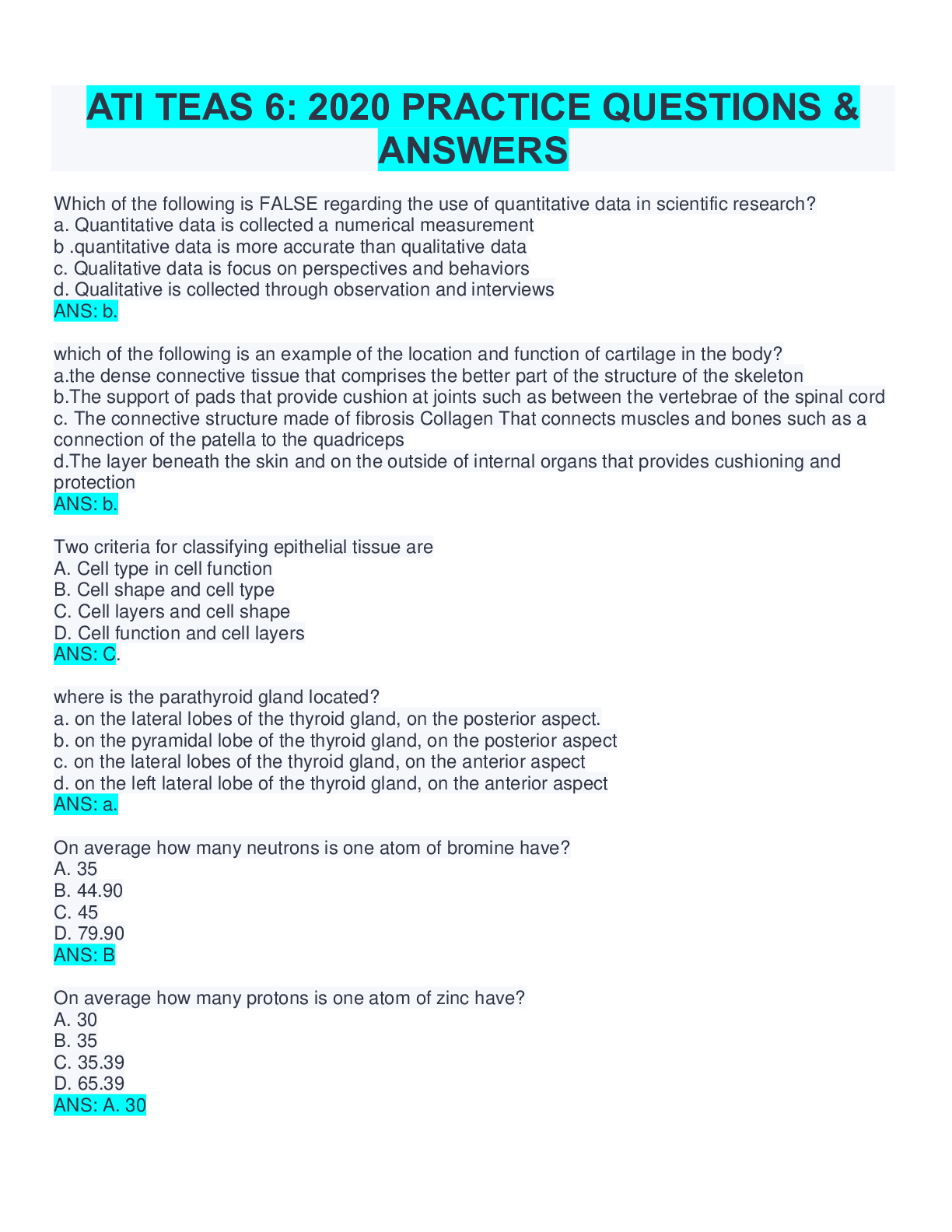
Reviews( 0 )
Document information
Connected school, study & course
About the document
Uploaded On
May 20, 2022
Number of pages
22
Written in
Additional information
This document has been written for:
Uploaded
May 20, 2022
Downloads
0
Views
48



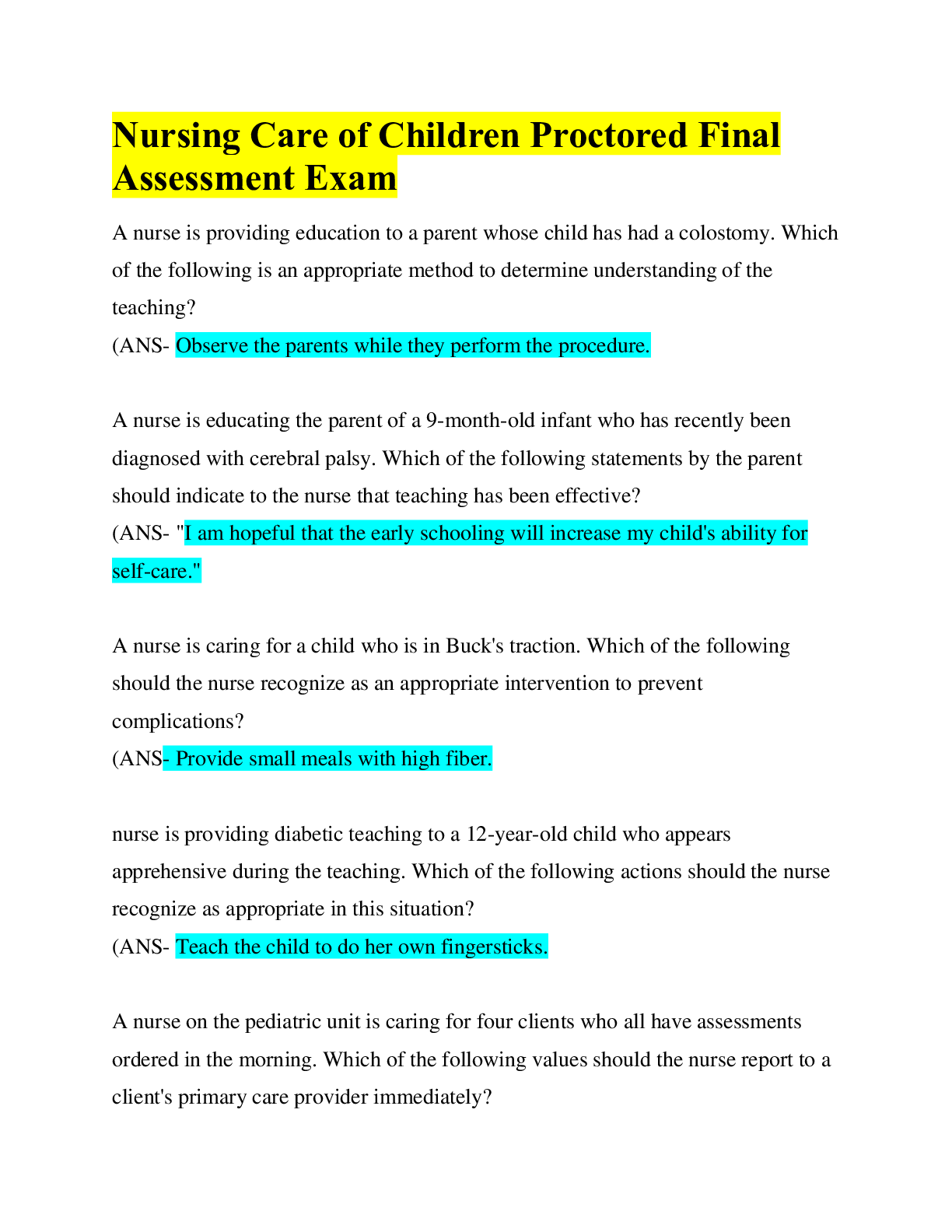
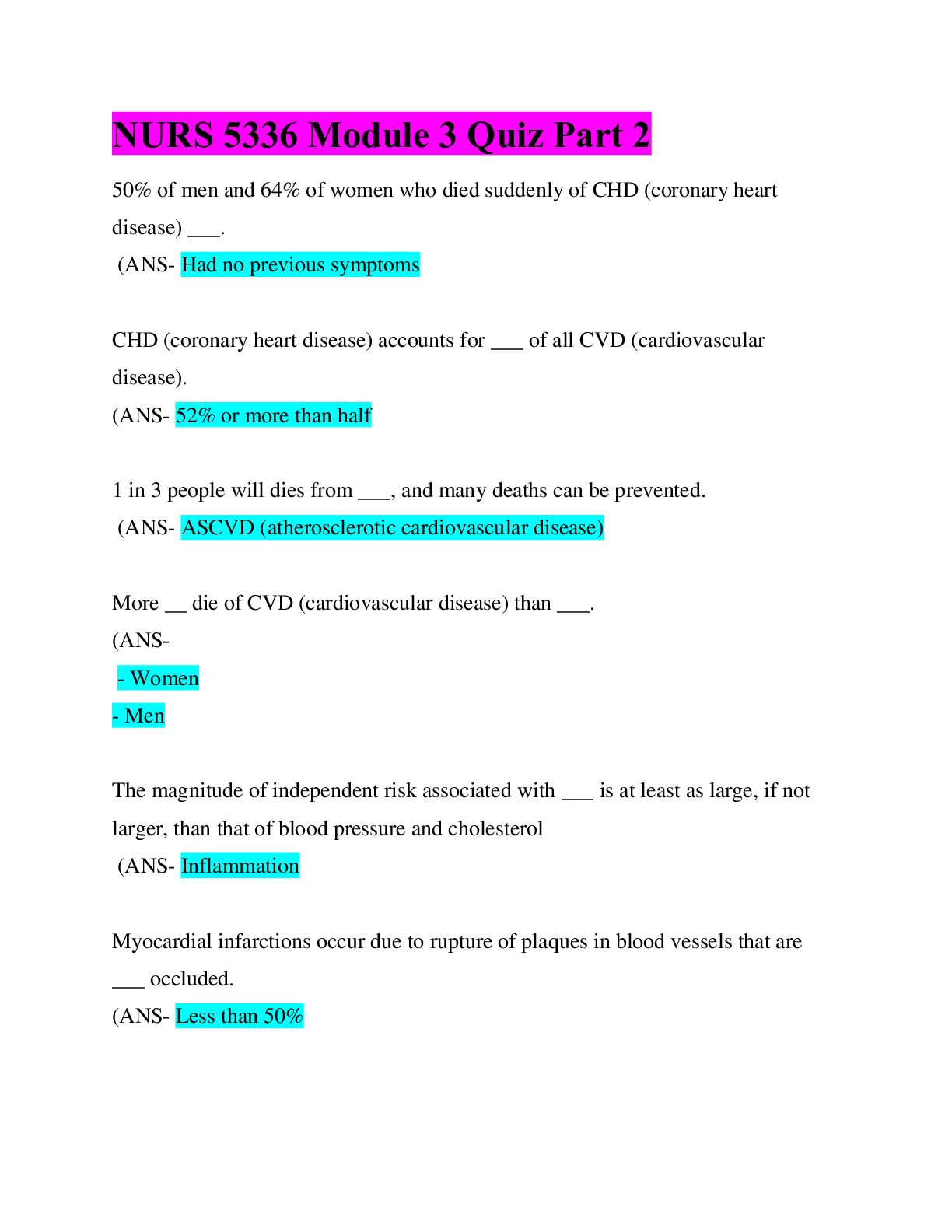
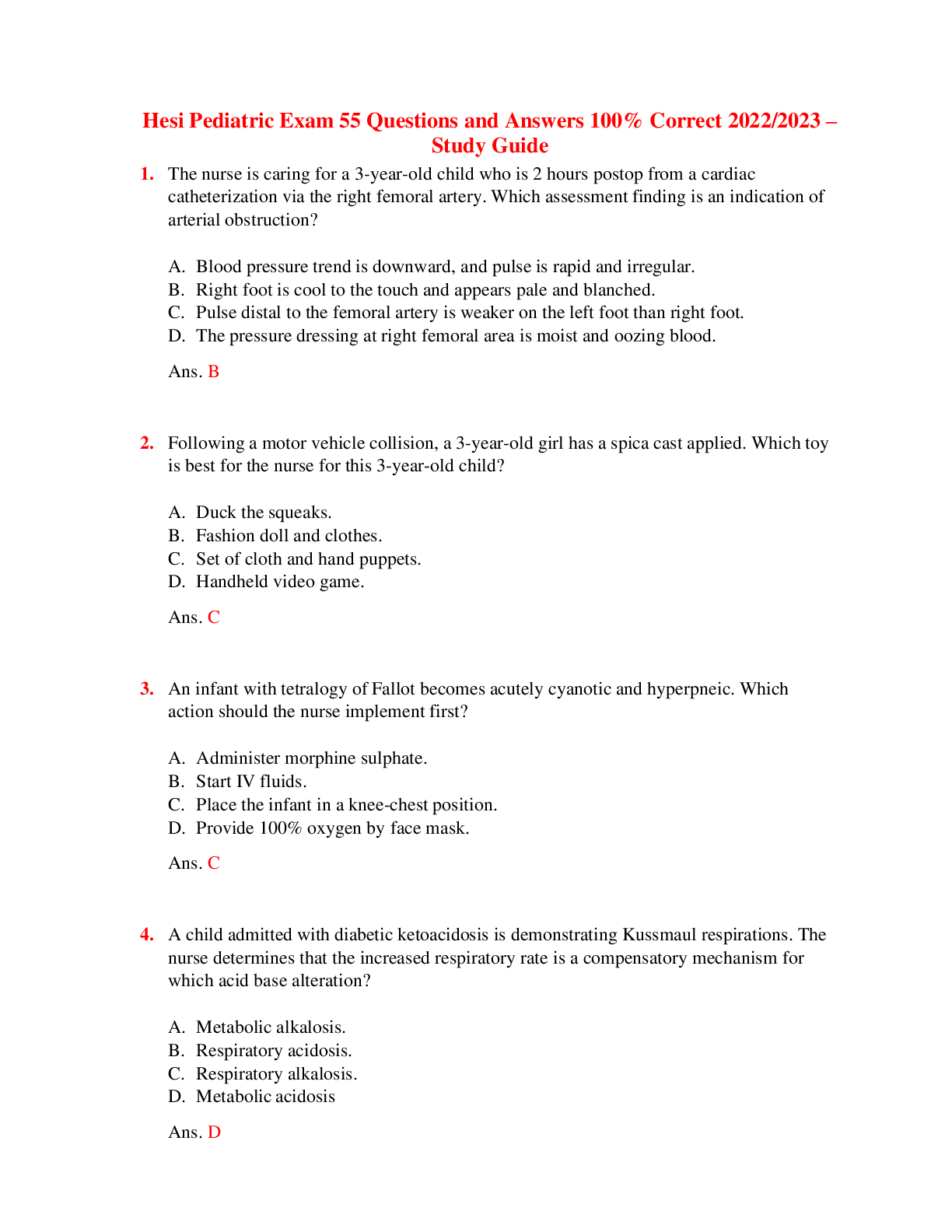

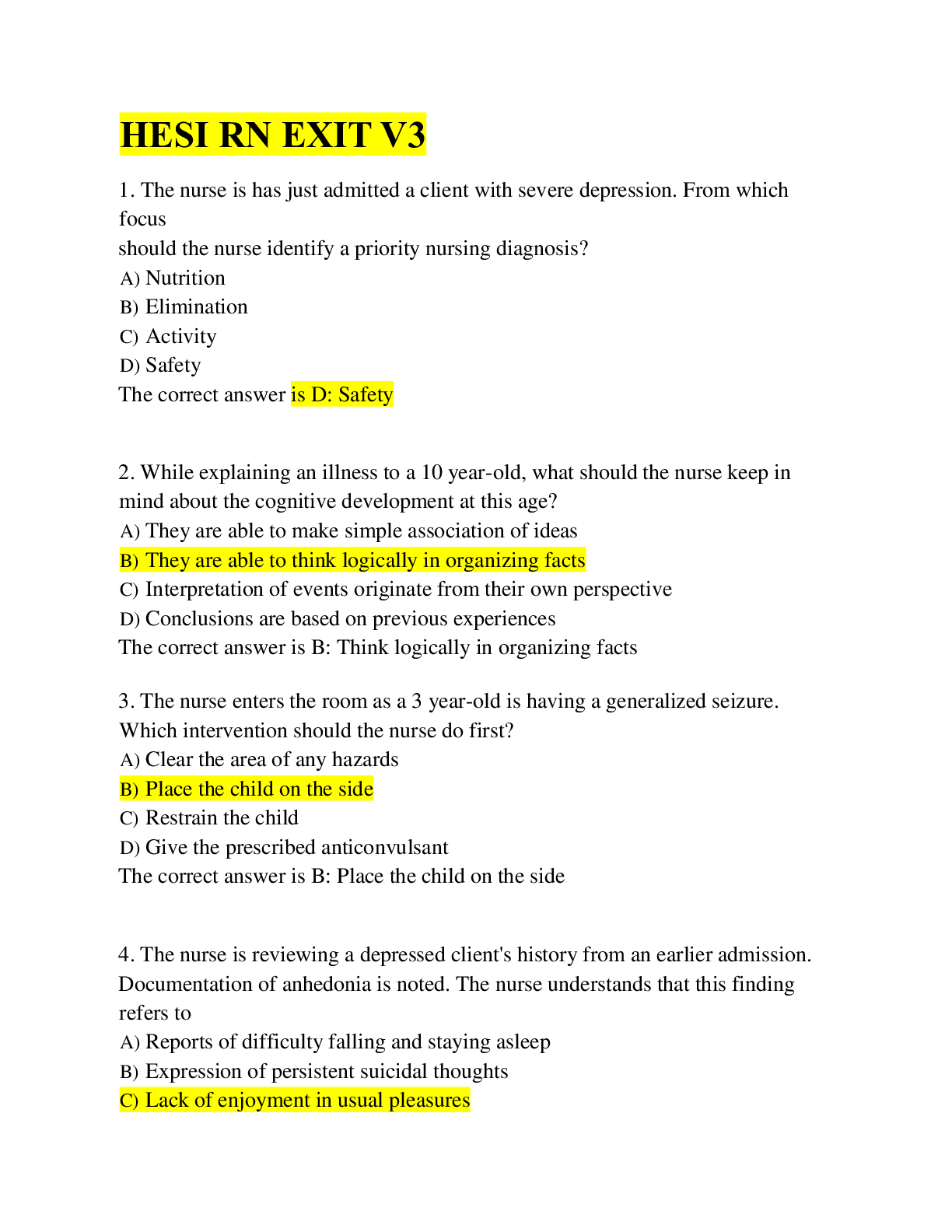
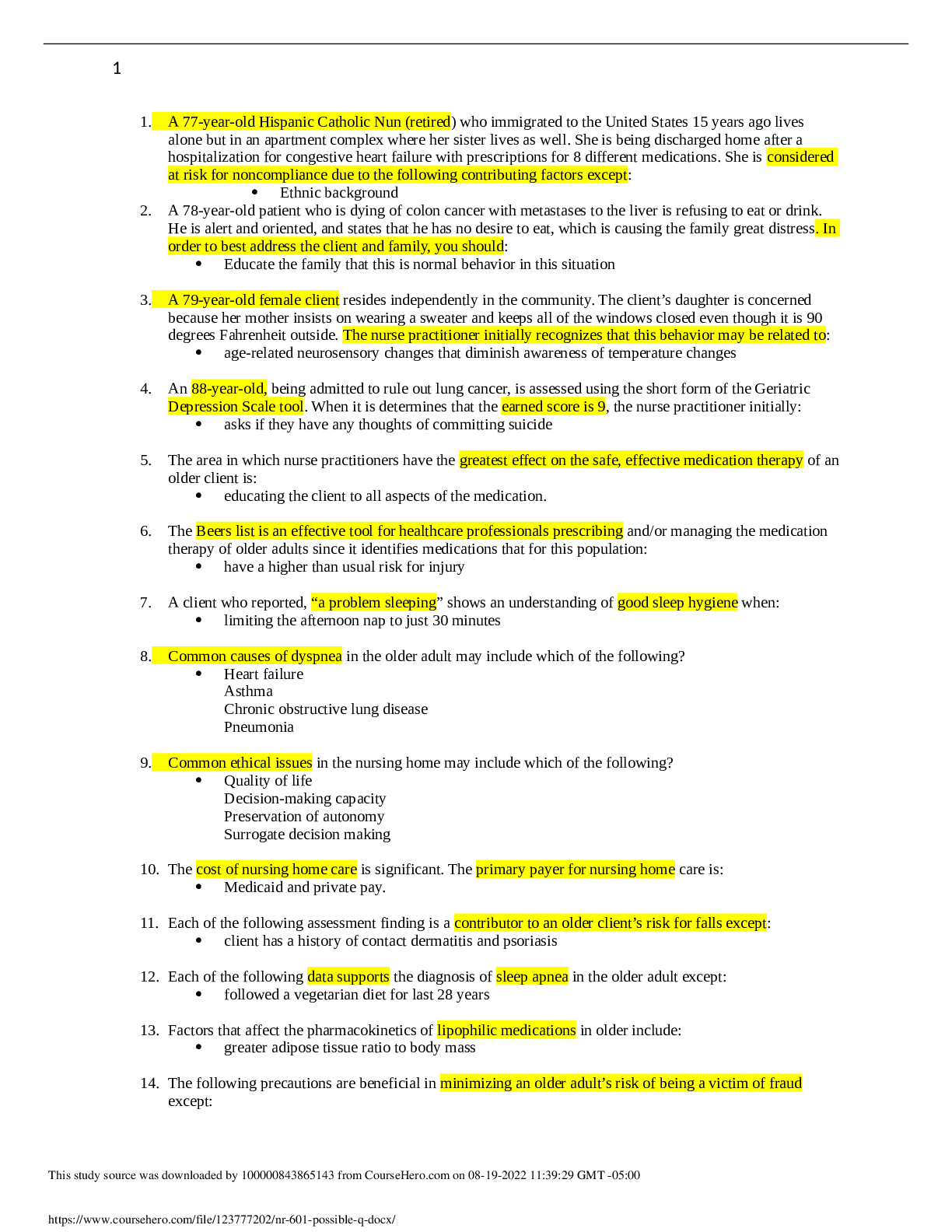
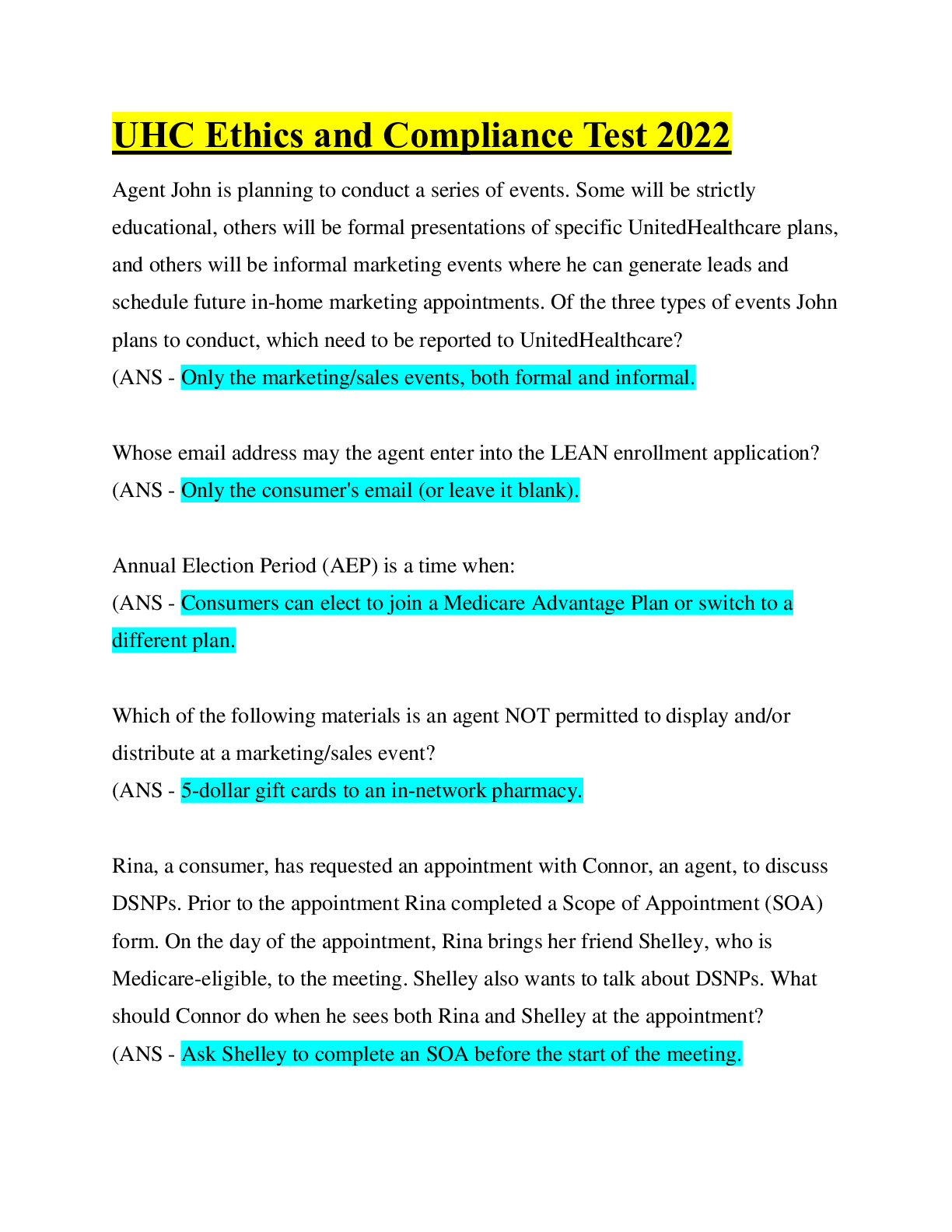

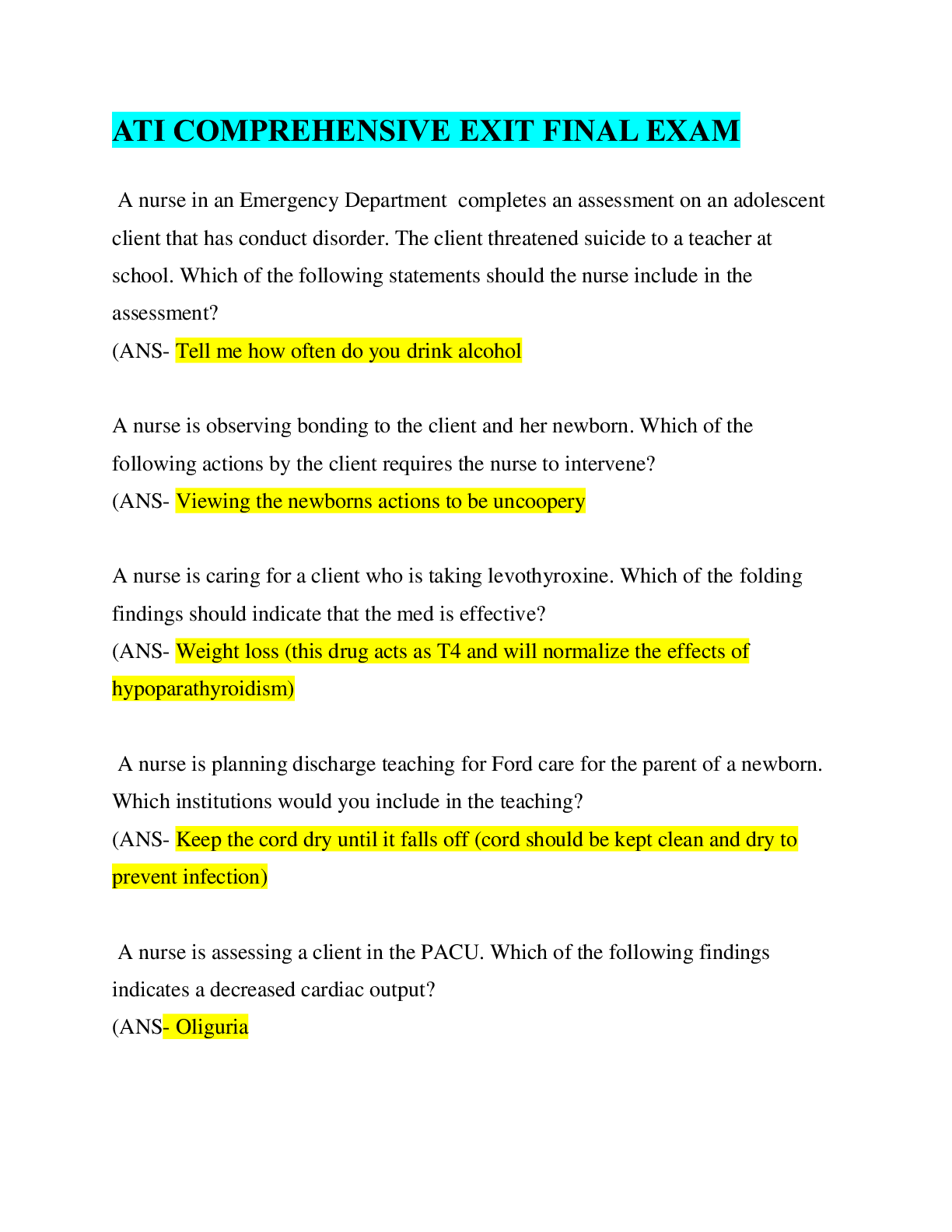
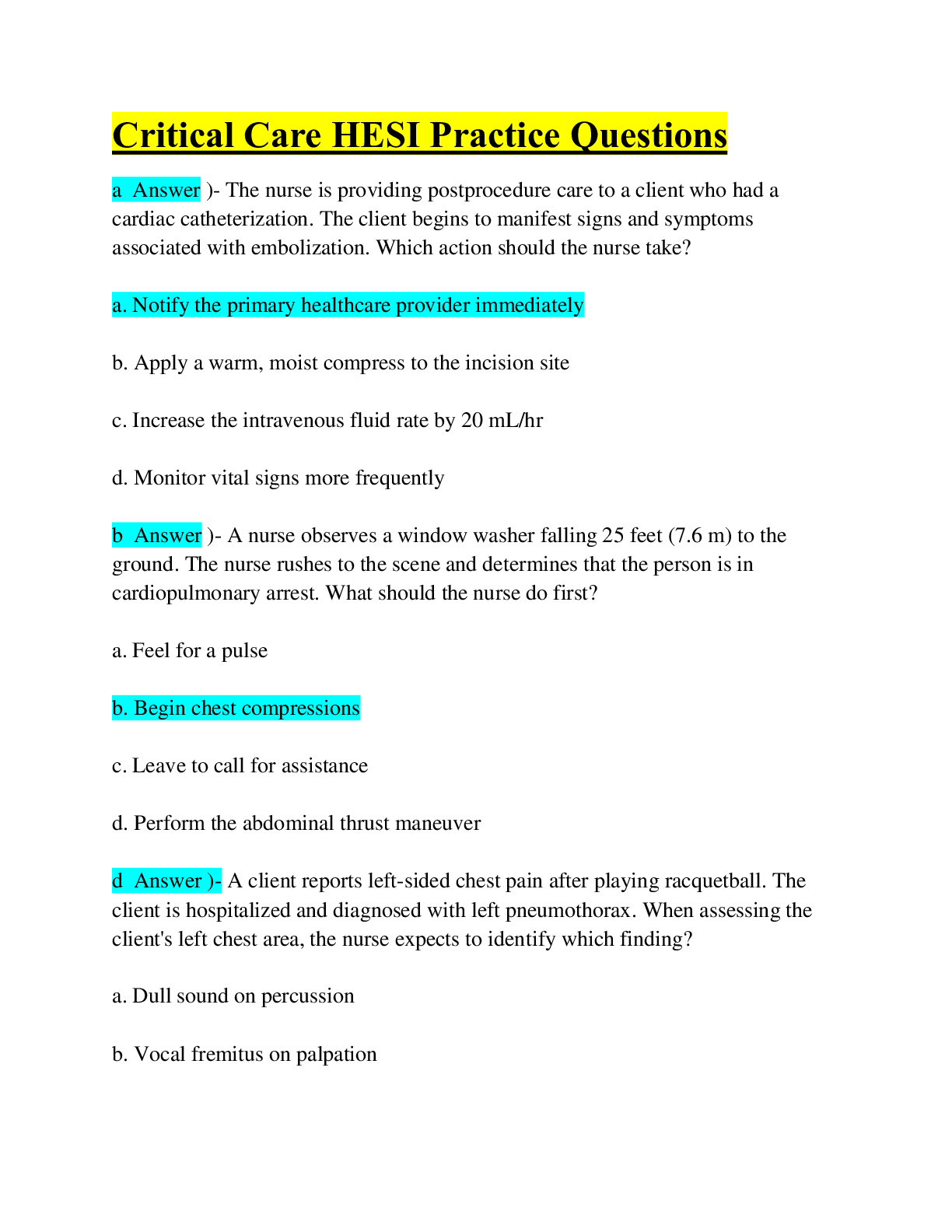


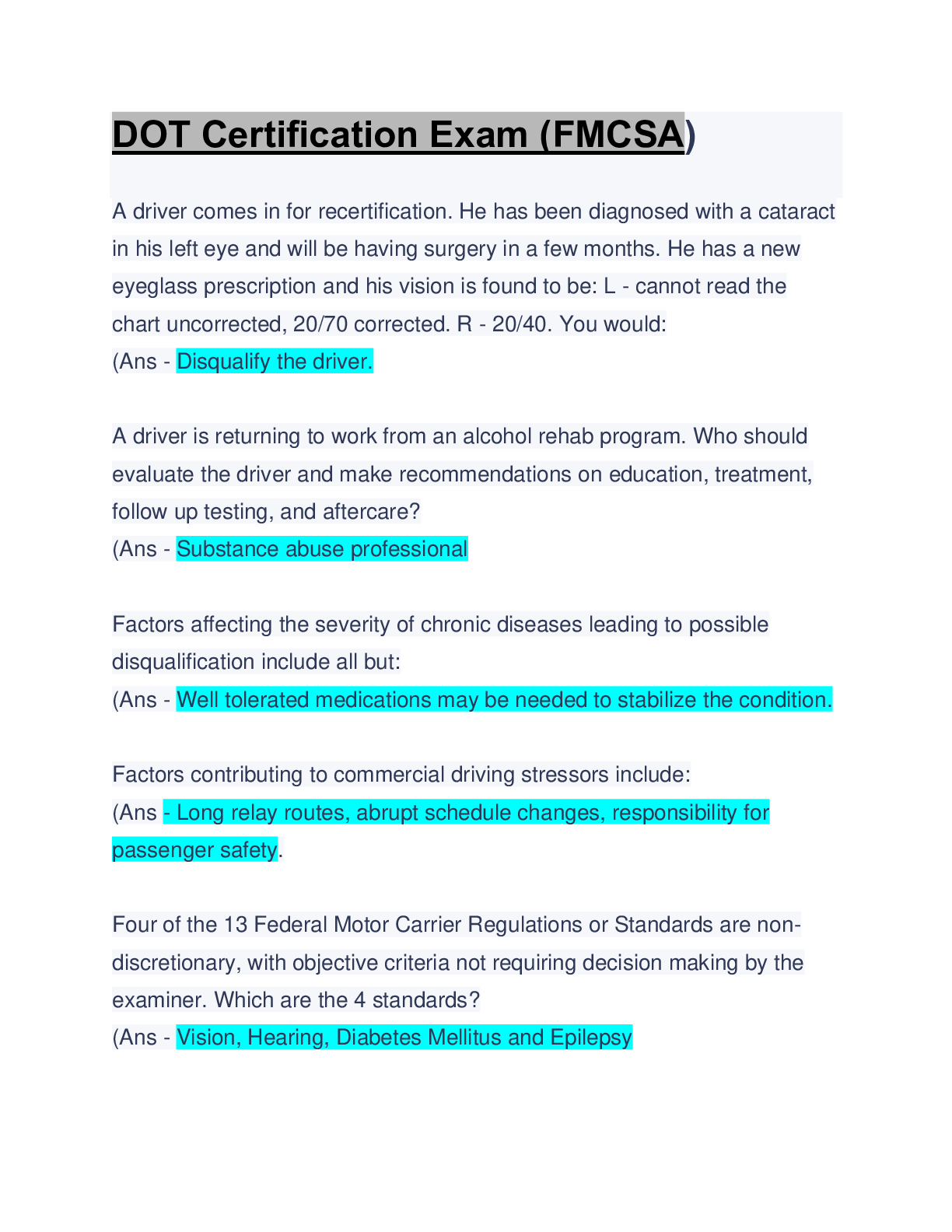





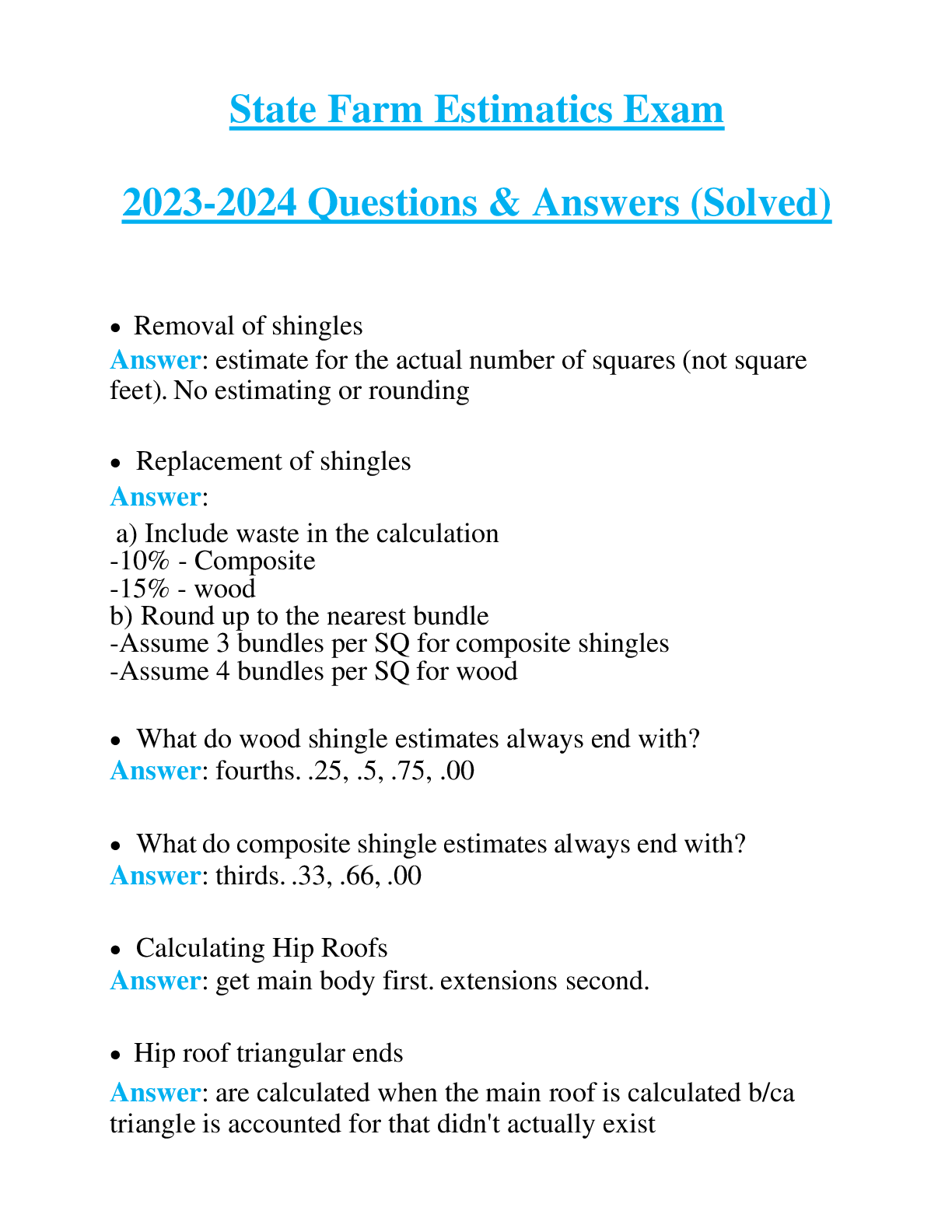
.png)



